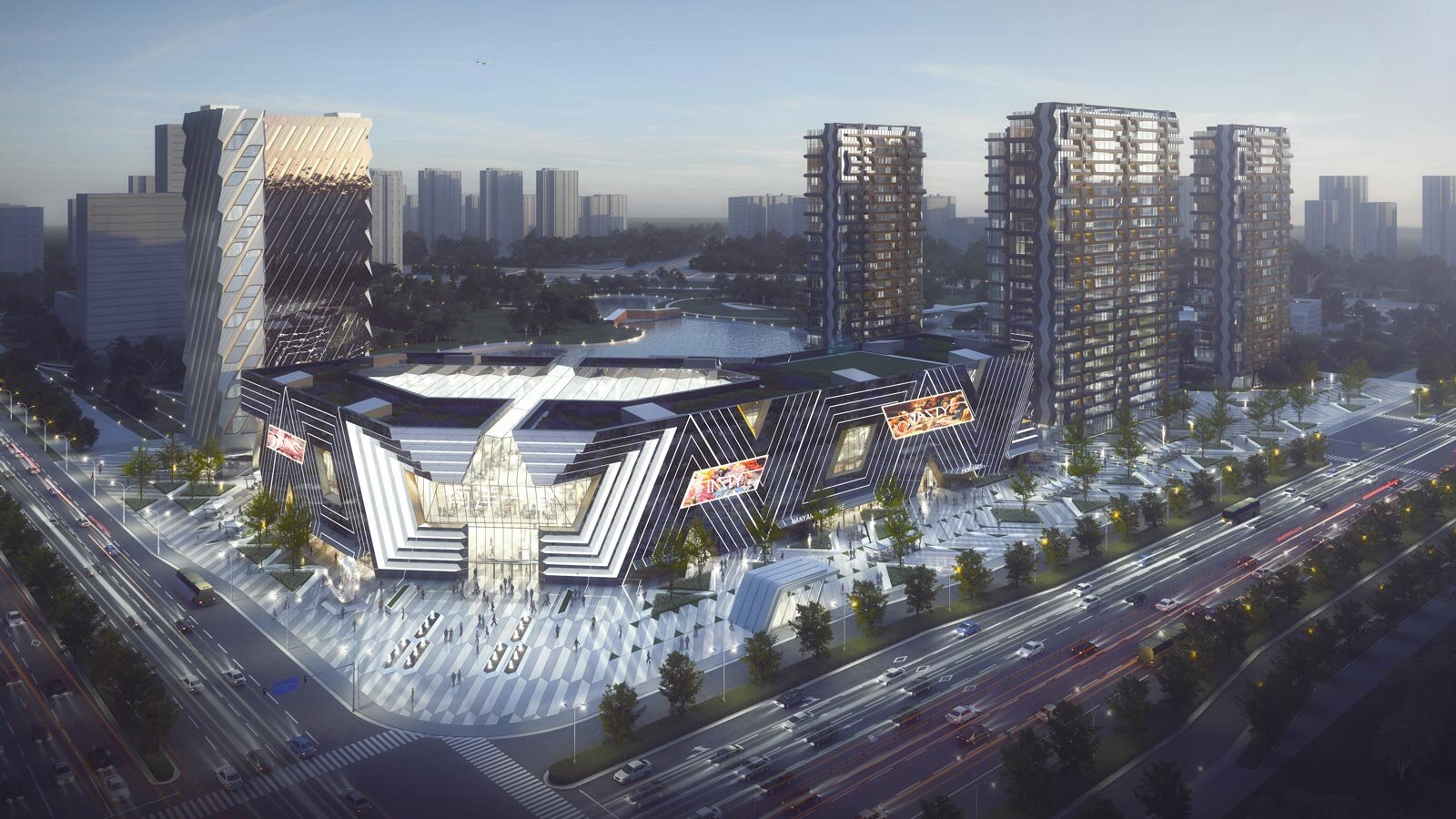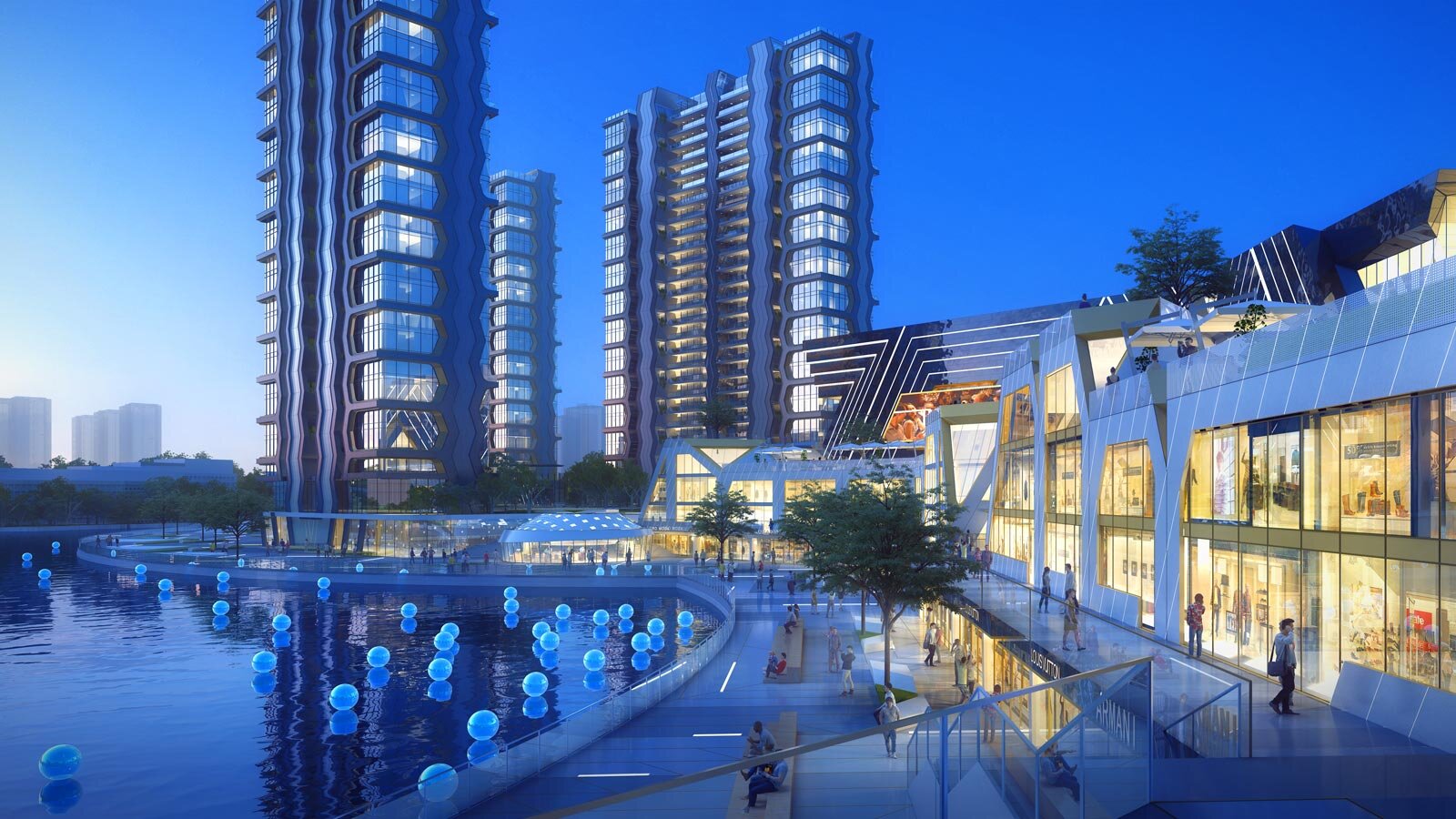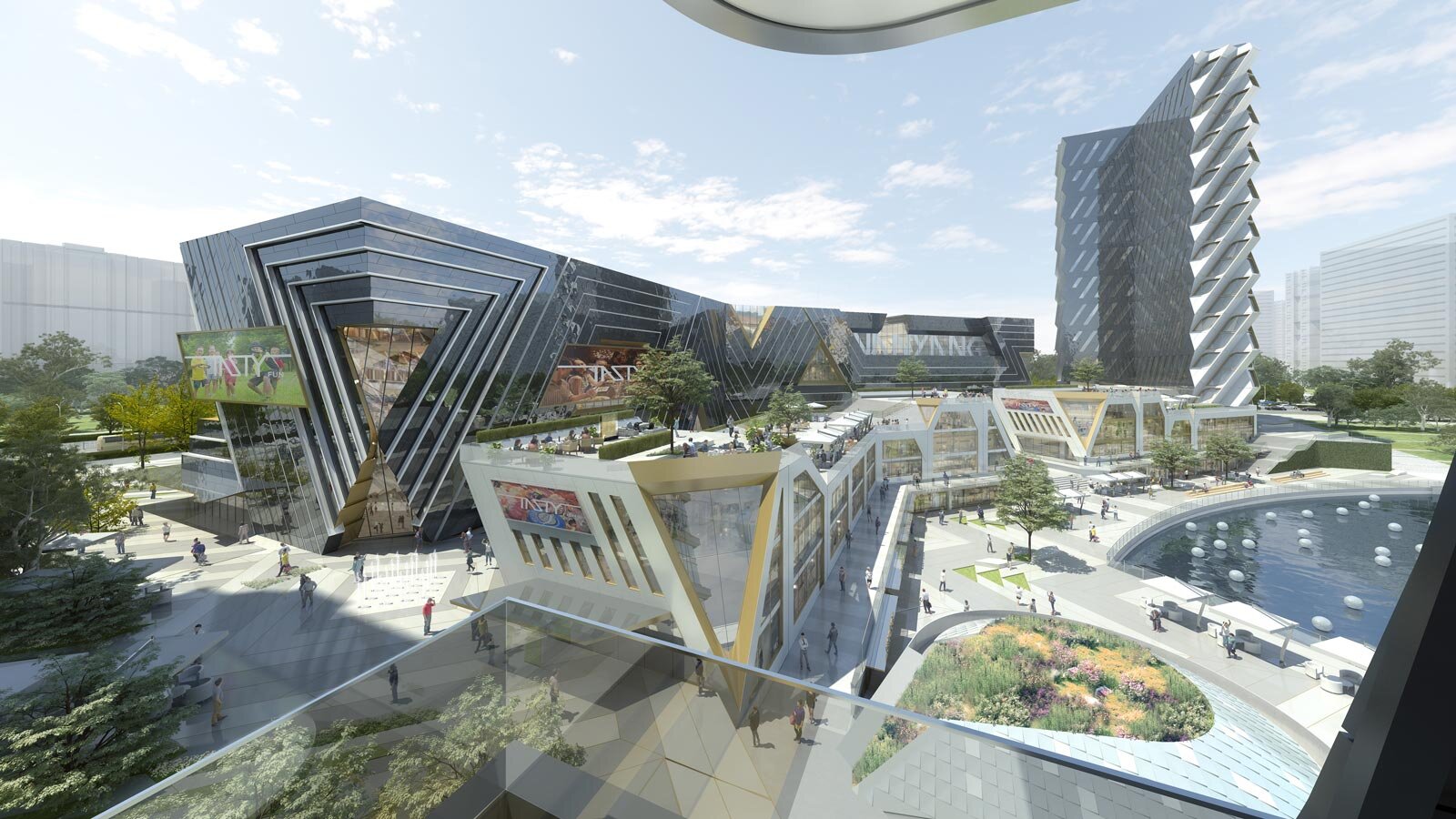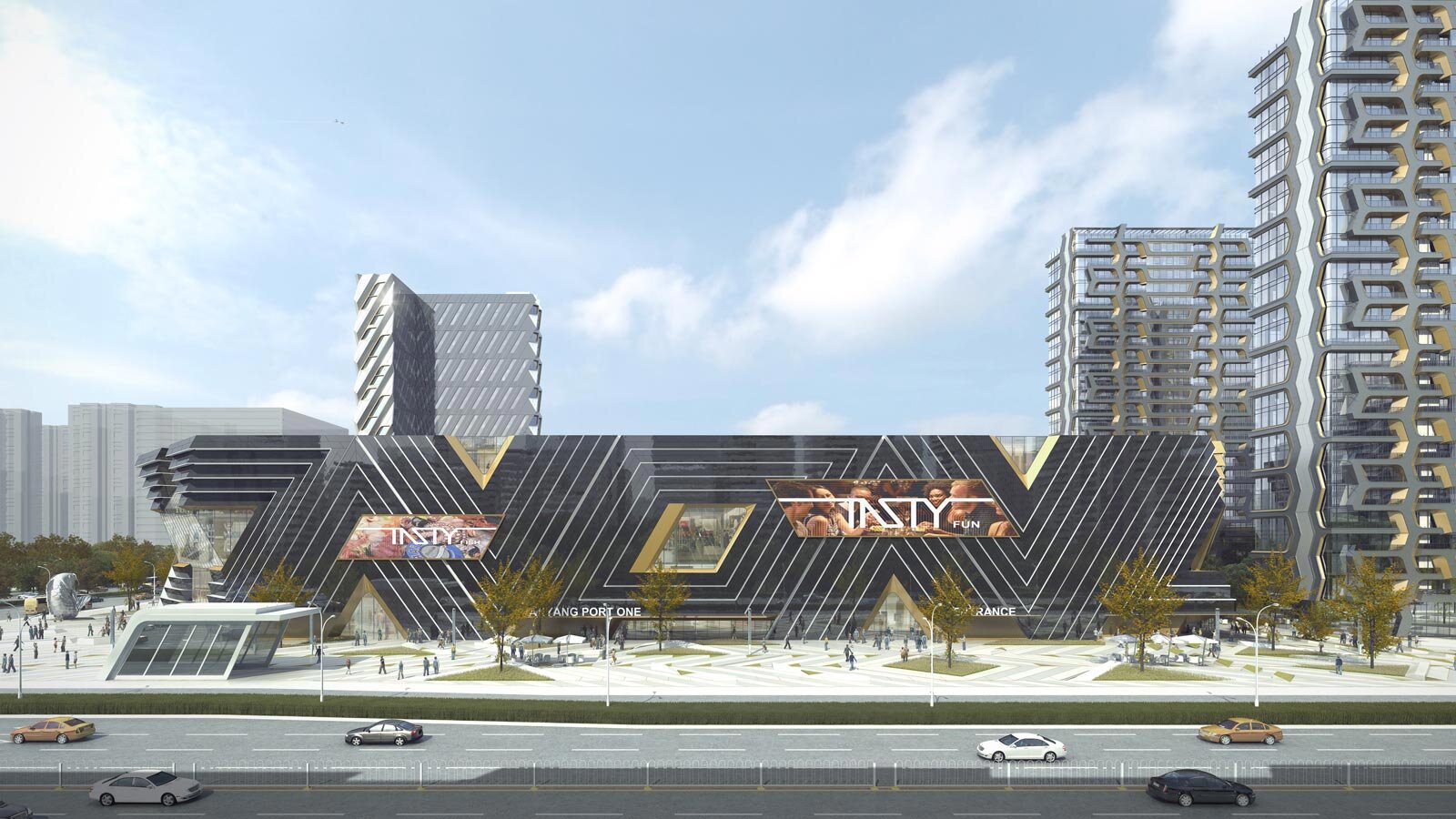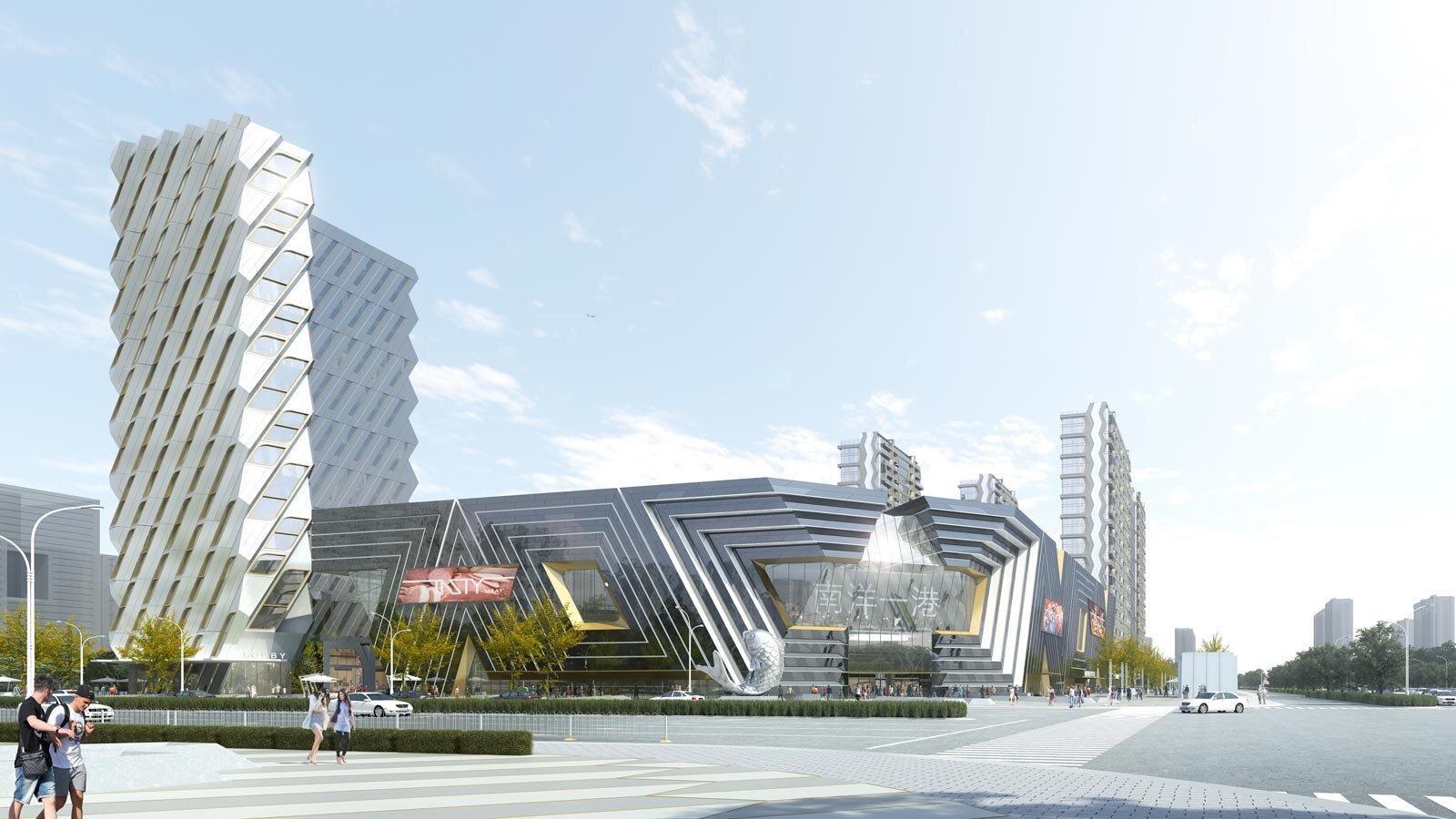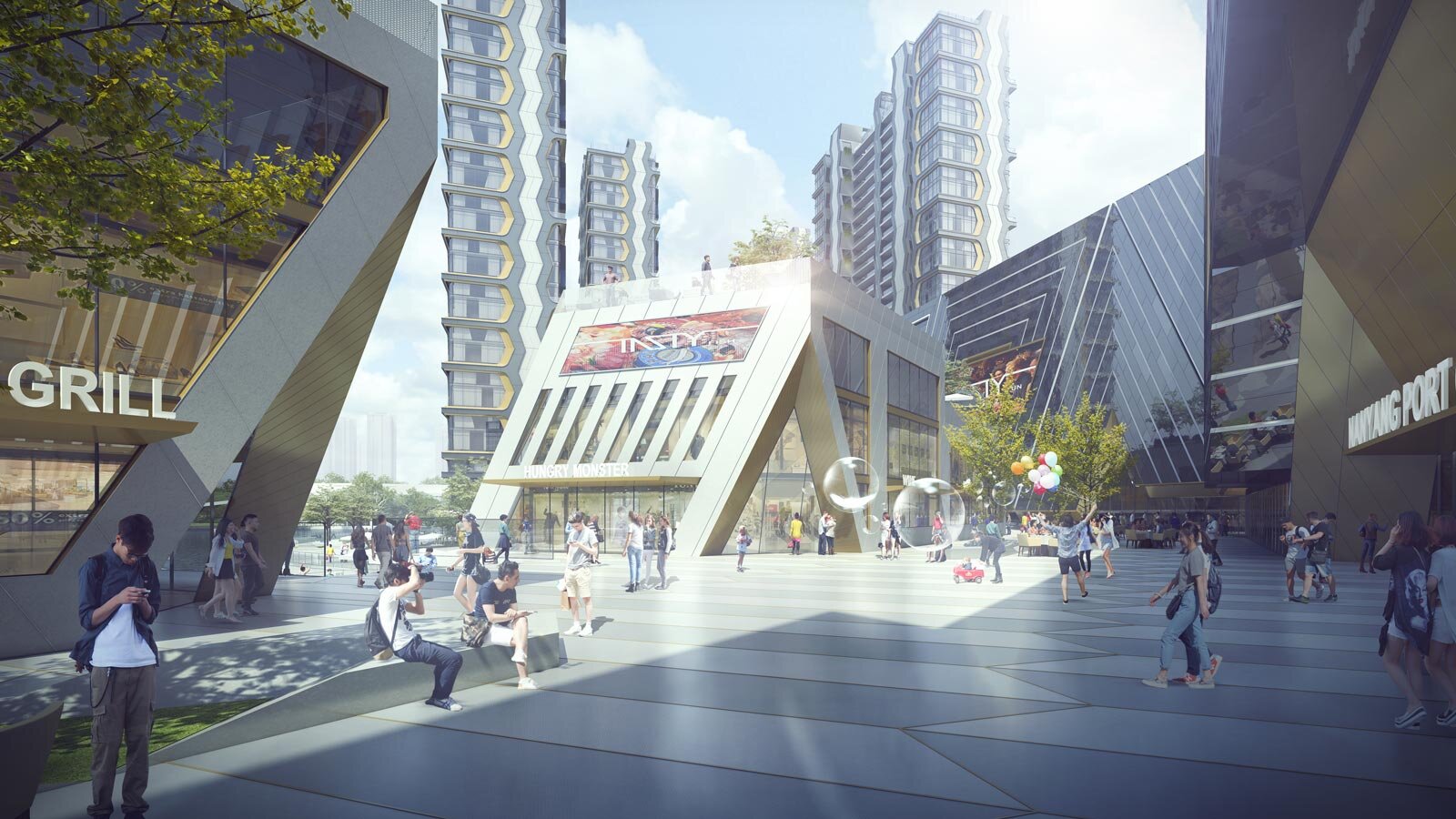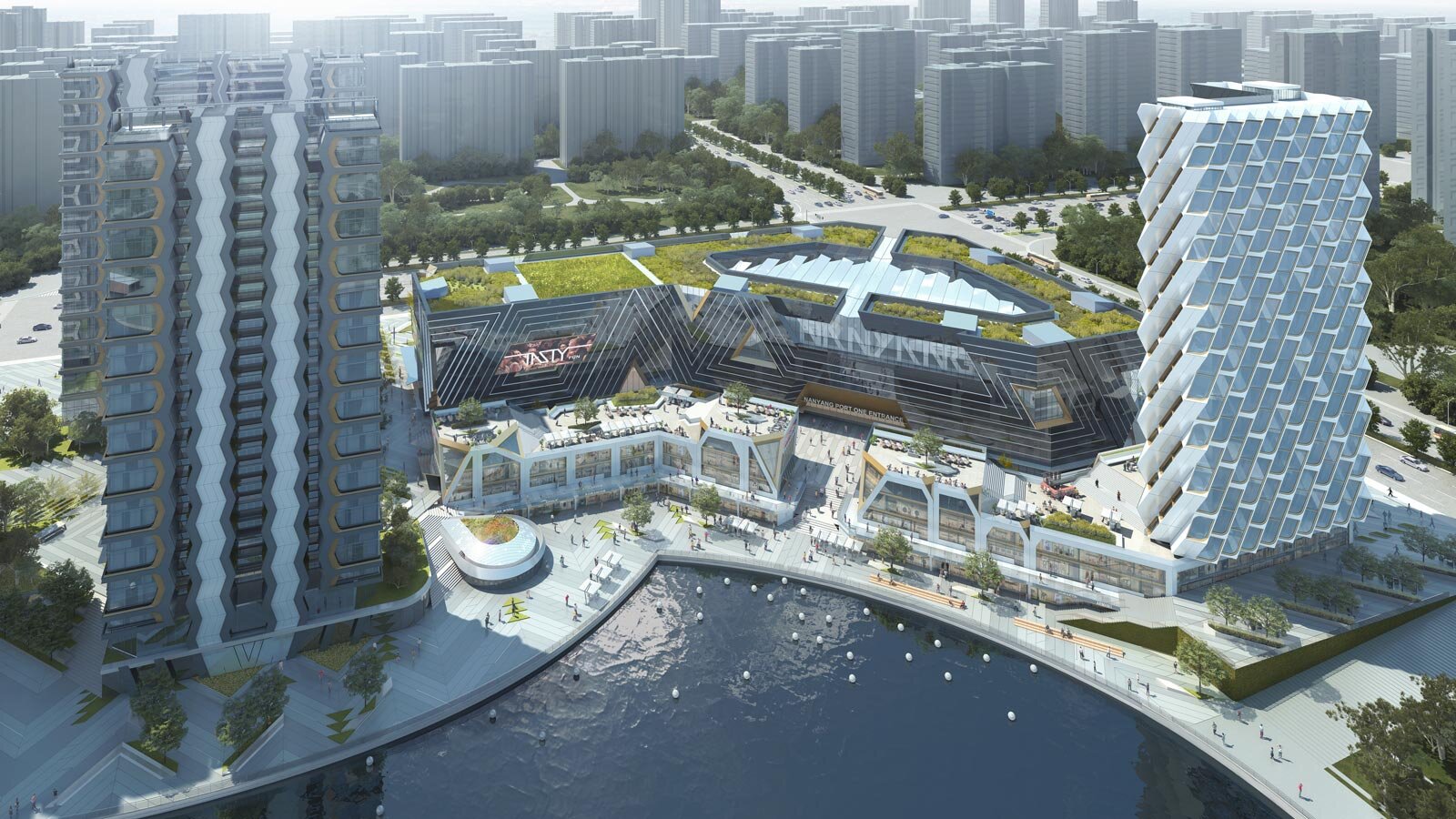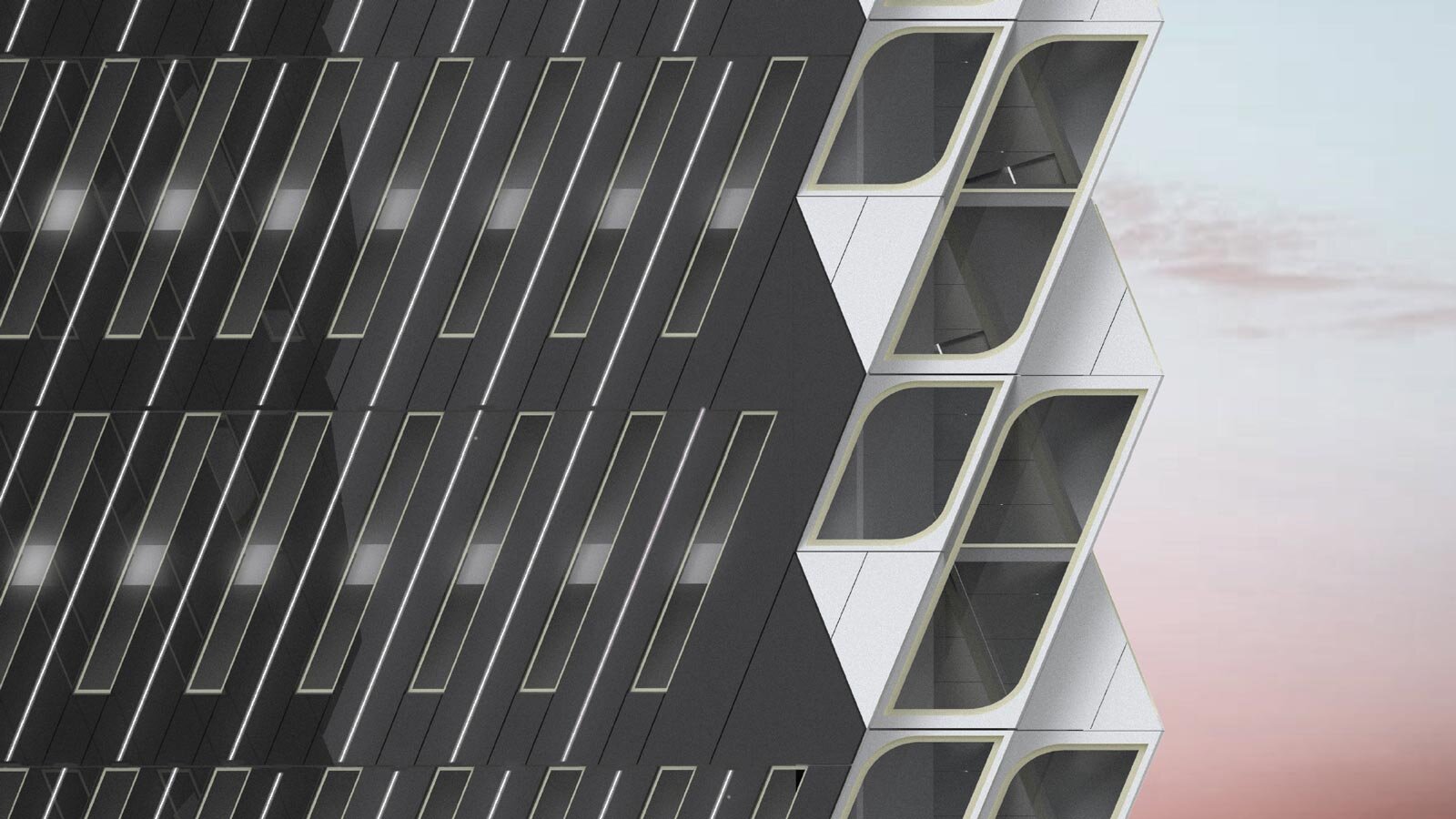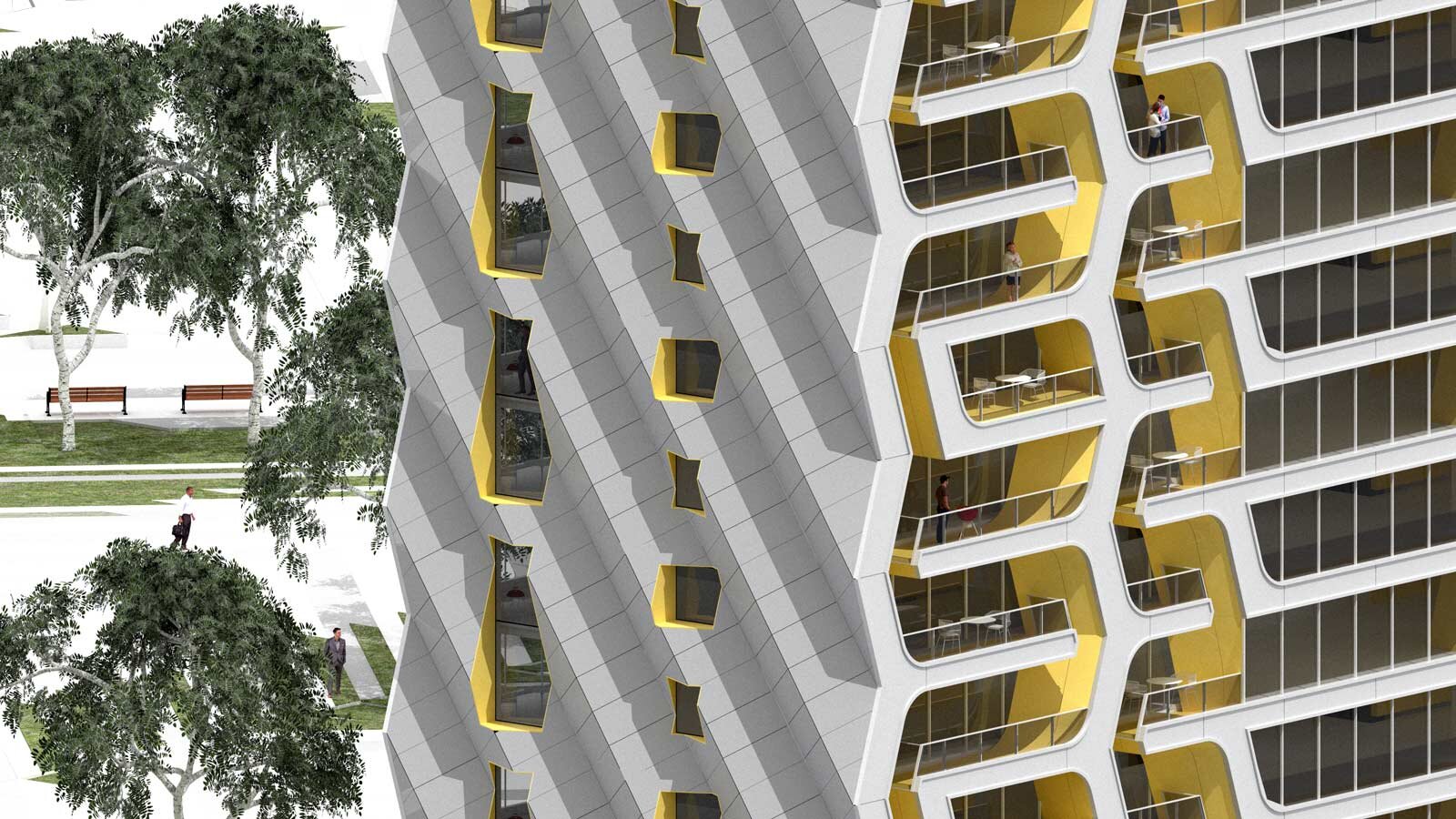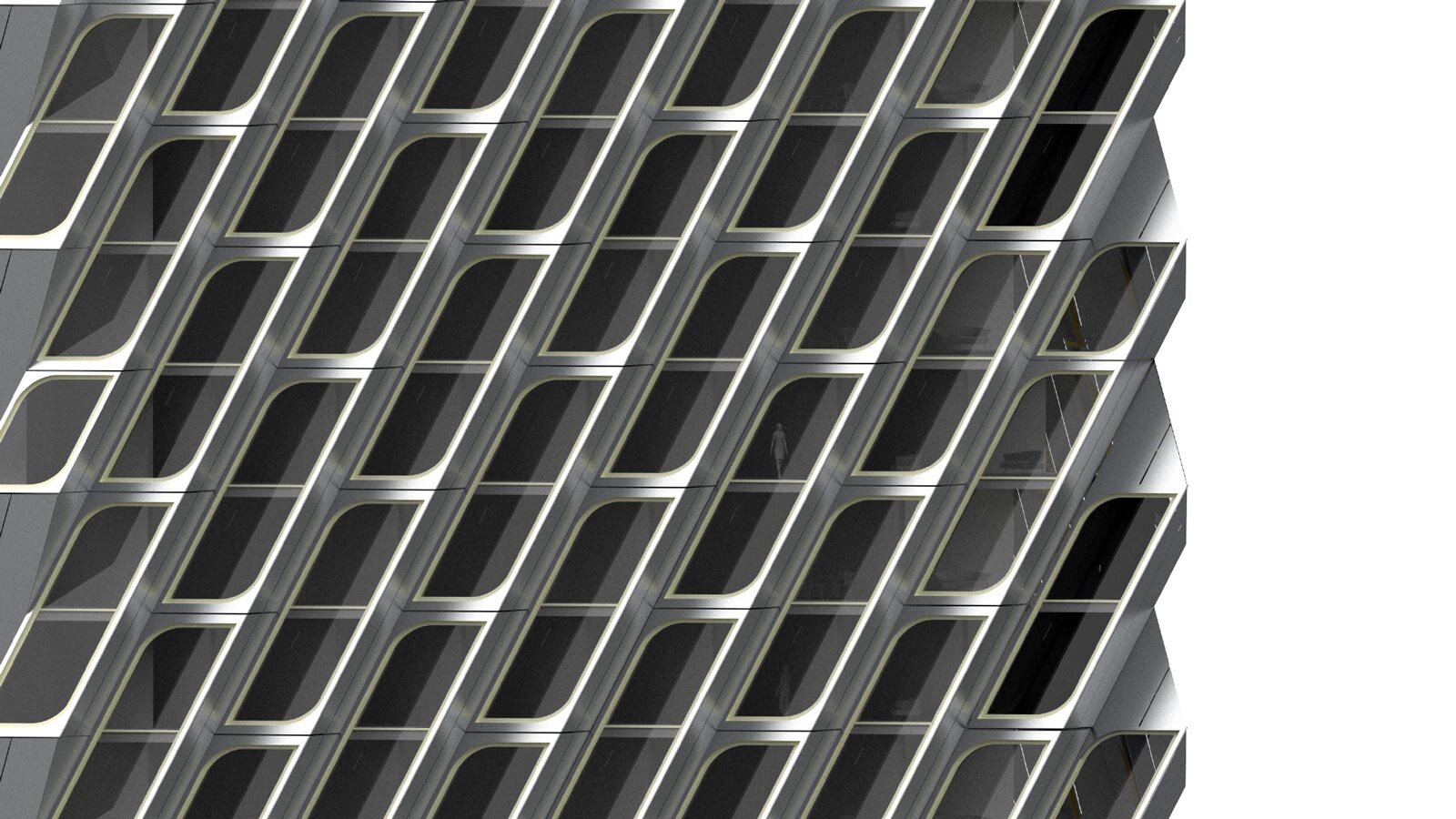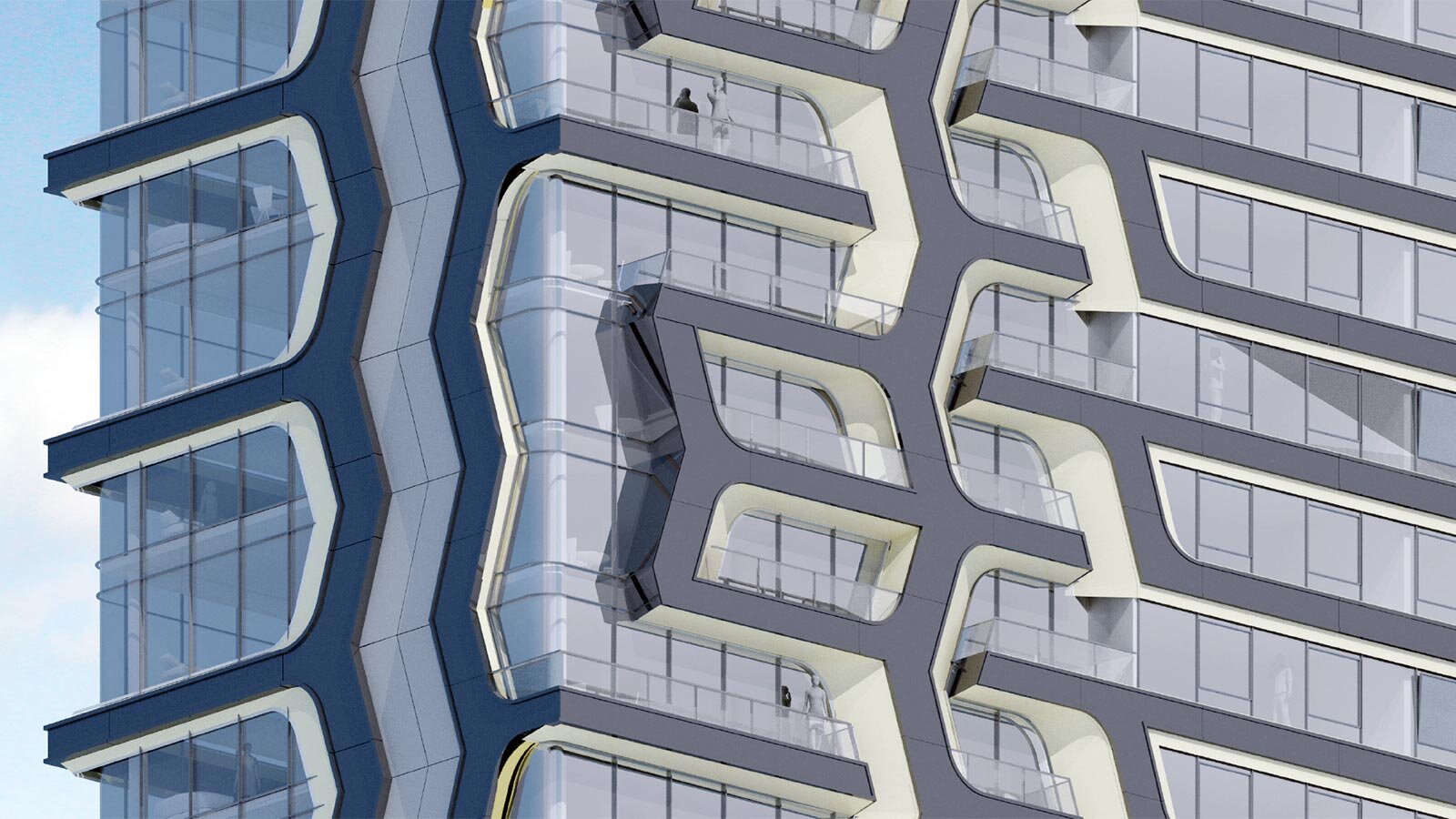Over a century of aggregations and copies of the Dom-ino diagram, has birthed the ‘Generic City’ of globalized sameness. This stack-attack methodology, cost-efficient for the developer of the building, has reduced architectural design to the fashioning of the envelope of a series of ur-types. Architect’s are bifurcated into those whom are dressing ur-types with engineered wrappes within a 2cm thick territory and others whom create elaborate ‘synthetic gestures’ of geometric form. The 1960’s saw a similar rupture in art, wherein a questioning of the plane of the painting lead to discussions on Shape and structure as an intermediary optic condition between the geometric nature of sculpture and the confines of Greenberg’s disciplinary plane.
/ GIF
The shaped canvas as a movement brought together artists whom were interrogating the flatness of the painted image, both in terms of its physical geometry and planarity as well as its perceived flatness in its colored and graphic character. In many cases a deep integration was found between the performative pattern of a surface and its gestalt organizing outer shape and canvas structure.





The design of folding franky follows similar principles in the urban realm, examining flat pack processes for the purposes of developing a new over-arching form that hovers in between two and three-dimensionality. This new optic flatness radicalizes the silhouette and apparent depth of the form of rather usual ur-types created for their interior efficiencies and performing outwardly for the realm of cultural enterprise.
/ Drawings
/ Project Team
Jonathan A. Scelsa, Jennifer Birkeland, Andy Kim, Fangge Wang
/ Project Info
/ Type - Commissioned Mixed - Use Masterplan
/ Location - Zhengzhou, Henan Province, China
/ Area - 100,000 m2
/ Client - XNY Port One
/ Date - 2020

